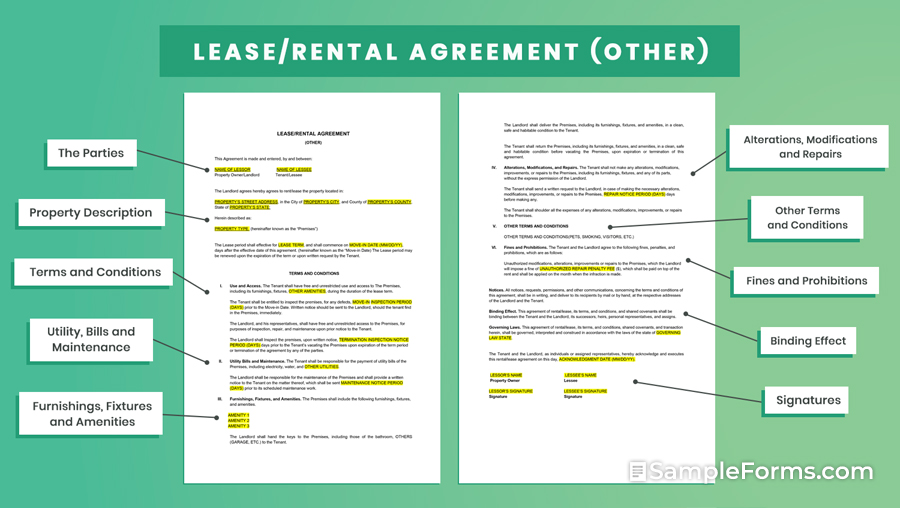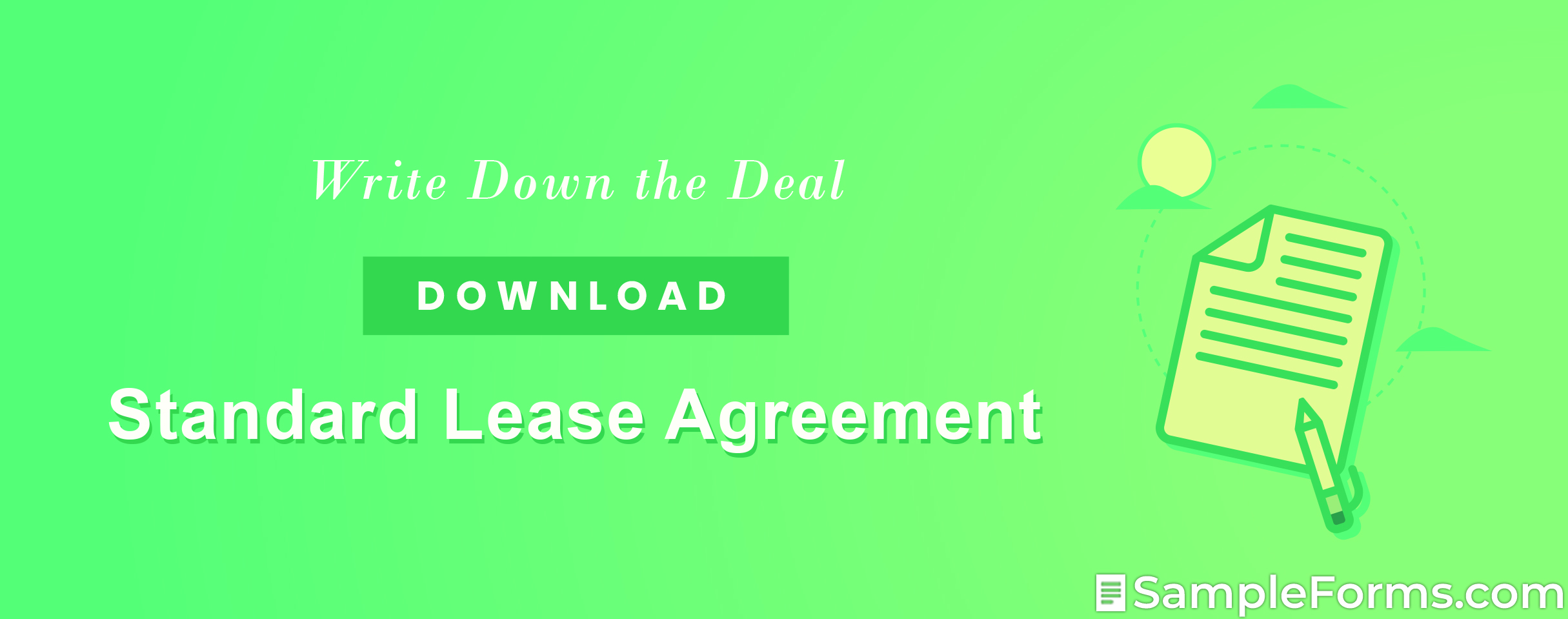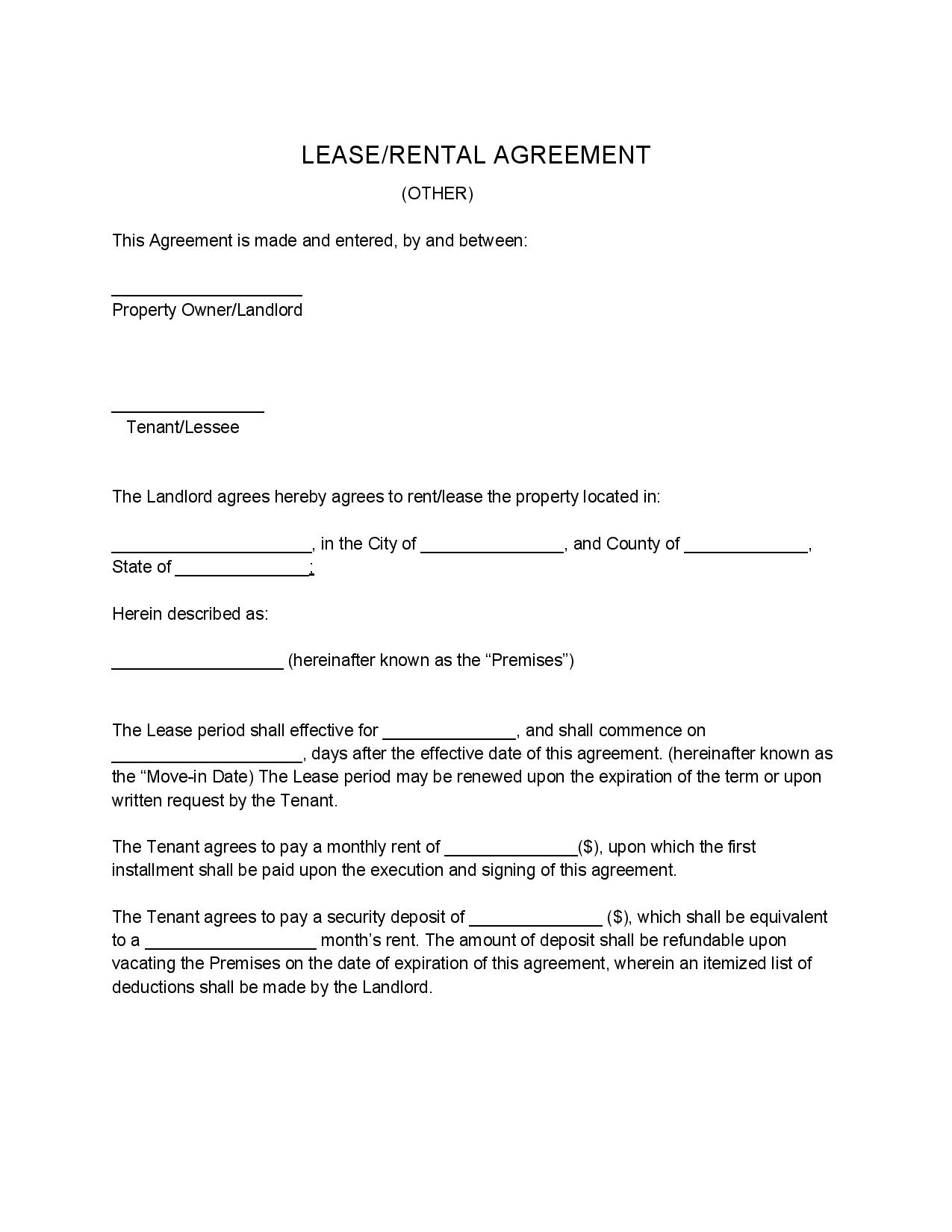- Eviction Notice Forms
- Power of Attorney Forms Forms
- Bill of Sale (Purchase Agreement) Forms
- Lease Agreement Forms
- Rental Application Forms
- Living Will Forms Forms
- Recommendation Letters Forms
- Resignation Letters Forms
- Release of Liability Agreement Forms
- Promissory Note Forms
- LLC Operating Agreement Forms
- Deed of Sale Forms
- Consent Form Forms
- Support Affidavit Forms
- Paternity Affidavit Forms
- Marital Affidavit Forms
- Financial Affidavit Forms
- Residential Affidavit Forms
- Affidavit of Identity Forms
- Affidavit of Title Forms
- Employment Affidavit Forms
- Affidavit of Loss Forms
- Gift Affidavit Forms
- Small Estate Affidavit Forms
- Service Affidavit Forms
- Heirship Affidavit Forms
- Survivorship Affidavit Forms
- Desistance Affidavit Forms
- Discrepancy Affidavit Forms
- Guardianship Affidavit Forms
- Undertaking Affidavit Forms
- General Affidavit Forms
- Affidavit of Death Forms
Standard Rental Lease Agreement
Landlords and tenants agree on a set of rules before the tenant moves into the property. These sets of rules are embedded in a legally binding document which is collectively called a lease/rental agreement. Contrary to popular belief, this agreement, among other types, can be crafted by the landlord themselves as long as they know what to include in the agreement. To give you an overview about a lease/rental agreement, continue reading below. Read More
Standard Rental Lease Agreement
What Is a Lease or Rental Agreement?

A lease or rental agreement is a written agreement to rent a property between the landlord and the tenant. The property commonly involved here are business offices, apartment complexes, the building itself, or a house. By agreeing to the terms and conditions set by the landlord, the tenant—therefore, gains temporary control of the property. The agreement ideally contains specifies the parties, the lease term, property description, and the payment terms.
According to iProperty Management, in about 64% of the US housing markets, buying has been proven to be more affordable compared to renting. The reason why is because of the accumulated monthly rent, in the long run, is larger compared to the one-time payment when buying. Some disadvantages that come with renting are possible annual rent increase, landlords with a bad attitude, and possible long-term commitments.
How to Write a Lease or Rental Agreement?
Creating your agreement shouldn’t have to be hard. Read about our tips below to help you create yours.
1. Search for Lease/Rental Agreement Templates
There are lease rental/agreement templates that are catered to fit the State that you belong to. Nonprofit organizations, legal assistance companies, and government agencies provide these forms online for free. Downloading a template for your lease/rental agreement is easier than having to start from scratch.
2. Draft Provisions on What You Want to Include
Are there provisions in your template that you think are unnecessary? You may replace them with your own provisions. List down the provisions that you want to include in your template and replace the useless ones in the template. Sample provisions that you may want to include are parking, pets, smoking, guests, and many more.
3. Look Up State Laws
Incorporating your own provisions into the template means that they also have to be in line with the State laws. Provisions that are against the State laws will deem your agreement as invalid and unenforceable—so, educate yourself as much as possible about the State laws.
4. Identify the Parties and Finalize Your Draft
The initial information of your agreement starts off with the identities of both parties. After this, you may proceed with the description of the property, the lease term, and the payment terms. State laws have a minimum requirement when it comes to the lease term and the payment terms—so, check to see your State’s minimum requirements. Finalize the provisions in your agreement by rereading the document and fact-checking it.
5. Input Causes for Default
Default clauses consist of violations that are equivalent to immediate termination. Some landlords provide grace periods to tenants to remedy light to moderate violations. But repeated violations may also constitute an immediate termination. Some heavy violations are the use of drugs in the property, tenants charged for criminal charges, and many more. List all terminal violations in this provision. The repercussions should be made clear from the start to discourage the tenant and the occupants from committing undesirable behavior from the start.
Frequently Asked Questions
What should be included in a lease/rental agreement?
Your lease/rental agreement shall include the full names and the complete address of both parties, the property’s address and legal description, payment terms, security deposit, use and access, utility bills and maintenance, furnishings, fixtures, and amenities, alterations, modifications, and repairs, fines and prohibitions, notices, binding effect, and governing law. However, you may add another stipulation in your agreement if you prefer.
Can a landlord evict me if there is no lease?
Yes. Without a lease, your tenancy is considered a month-to-month tenancy, and you are inclined to pay on a month-to-month basis. Always ask for a written agreement from your landlord. Sure, a verbal agreement is still acceptable but it is hard to enforce it in court.
Who should be keeping the original copy of the agreement?
The landlord should be keeping the original copy of the agreement. However, you should also ask for your own copy for personal records. In some cases, both parties are provided an original copy of the agreement.
How do I prove that the landlord actually owns the property?
According to Letting a Property, you can ask for the landlord’s proof of ownership such as a land registry certificate, a mortgage statement, and a title deed and/or a photo ID such as the passport and the driver’s license. It’s wise to make sure that you are dealing with the real owner of the property.
Can a landlord refuse to renew a lease?
Yes. Landlords are not obligated to renew the lease for tenants. They have the full authority to renew it or not and they can also refuse to renew if they dislike the tenant. But the landlord will not be allowed to refuse to renew the lease because of racial dislike.

